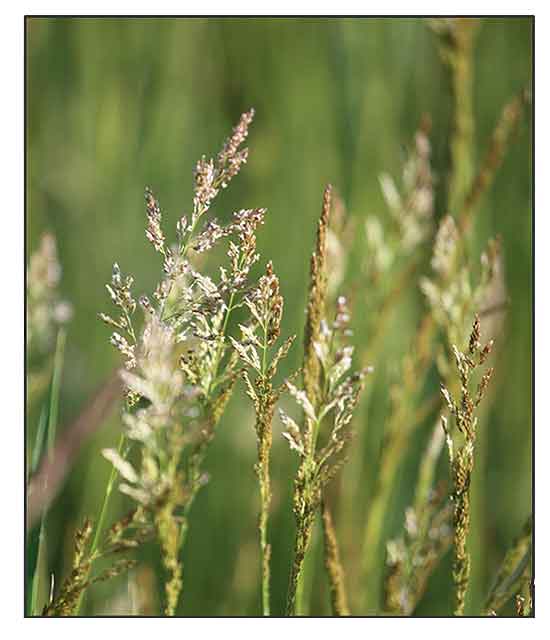
Family • Myrtaceae
Redtop
Agrostis gigantea Roth
BLACK BENT GRASS
Hong zhu gao yun gan
| Scientific names | Common names |
| Agrostis alba subsp. gigantea (Roth) Arcang. | Black bent (Engl.) |
| Agrostis alba var. gigantea (Roth) Arcang. | Black bent grass (Engl.) |
| Agrostis alba var. patula Klett & Richt. | Bonnet grass (Engl.) |
| Agrostis gigantea (Roth) | Couch grass (Engl.) |
| Agrostis stignata var. gigantea (Roth) Schur | Creeping bentgrass (Engl.) |
| Agrostis stolonifera var. gigantea (Roth) Rchb. | Fiorin (Engl.) |
| Agrostis stolonifera subsp. gigantea (Roth) Schübl. & G.Martens | Redtop (Engl.) |
| Agrostis stolonifera var. rothii Heuff. | Redtop bent grass (Engl.) |
| Agrostis vinealis var. gigantea (Roth) Pers. | Water bent grass (Engl.) |
| Agrostis vinealis var. gigantea (Roth) Willd. | |
| Vilfa gigantea (Roth) P.Beauv. | |
| Accepted infraspecifics (2) | |
| Agrostis gigantea subsp. gigantea | |
| Agrostis gigantea subsp. maeotica (Klokov)Tzvelev | |
| Some publications list Agrostis gigantea and A. stolinifera as synonyms. POWO lists thems as separate species. Creeping bentgrass as common name is shared by both species. | |
| Agrostis gigantea Roth is an accepted species. KEW: Plants of the World Online | |
| Other vernacular names |
| CHINESE: Hong zhu gao yun gan. |
| FRENCH: Agrostide blanche, Agrostide géante, Weiße straußbras. |
| GERMAN: Fioringras, Riesenstraußgras. |
| SPANISH: Pasto quila, Agrostide mayor, Agrostide blanca. |
Distribution Constituents Properties Studies Availability |
April 2025
![]()
 |
| Â Â Â Â Â Â Â Â Â Â Â Â Â Â Â Â Â Â Â Â Â Â Â Â Â PHOTOS / ILLUSTRATIONS |
| IMAGE SOURCE: Agrostis gigantea / © John Hilty : 2025: Illinois Wildflowers / Non-commercial use / Click on image or link to go to source page/ Click on image or link to go to source page / GO BOTANY |
| OTHER IMAGE SOURCE: Illustration: Agrostis gigantea - Inflorescences / © Elizabeth Farnsworth : 2025: New England Wild Flower Society / Non-commercial use / Click on image or link to go to source page / GO BOTANY |
| OTHER IMAGE SOURCE: Agrostis gigantea - Ligule / Kristian Peters / CC BY-SA 3.0 / Click on image or link to go to source page / Wikipedia |
| OTHER IMAGE SOURCE: Agrostis gigantea / © Thomas Wrbka Abbott / Some rights reserved / CC BY-NC / Click on image or link to go to source page / iNaturalist |
Additional
Sources and Suggested Readings |
• |
DOI: It is not uncommon for links on studies/sources to change. Copying and pasting the information on the search window or using the DOI (if available) will often redirect to the new link page. (Citing and Using a (DOI) Digital Object Identifier) |
| Â Â Â Â Â Â Â Â Â Â Â Â Â Â Â Â Â Â Â Â Â Â Â Â Â Â Â Â Â Â List of Understudied Philippine Medicinal Plants |
| Â Â Â Â Â Â Â Â Â Â Â Â Â Â Â Â Â Â Â Â Â New plant names needed The compilation now numbers over 1,500 medicinal plants. While I believe there are hundreds more that can be added to the collection, they are becoming more difficult to find. If you have a plant to suggest for inclusion, native or introduced, please email the info: scientific name (most helpful), local plant name (if known), any known folkloric medicinal use, and, if possible, a photo. Your help will be greatly appreciated. |
• |
 |



